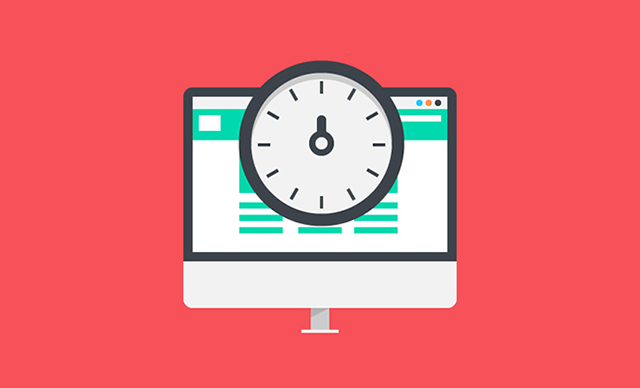3 Different types of eCommerce websites and things to know about them
In one of the previous articles, we introduced to you more than ten different types of websites and their uses, in which eCommerce website is a very popular one, right? And in today’s article, we are going to take a deeper look at this common type of website as well as explore 3 different types of eCommerce websites and things to know about them. Let’s do it right now!
Do you know how many different types of eCommerce websites are available now?
The availability of fast internet connection speed, the diversity of eCommerce platforms, and the development of modern technology have made it simpler than ever to both buy and sell goods, services over the Internet.
These days, a lot of companies and businesses can easily set up their own eCommerce websites to directly sell products and consider them as an essential part of their distribution strategies and sales efforts.
Of course, it’s so great for businesses to have an eCommerce site. But among different types of eCommerce websites out there, which one should you go for? Keep reading on and you will know the answer. But before that, it’s better to spend a few minutes learning basic things about the eCommerce business, right?
Some basic things about the eCommerce business
According to Shopify, eCommerce is defined as “the buying and selling of goods and services using the Internet.” In fact, there are different types of eCommerce business models, in which B2B (Business-to-Business), B2C (Business-to-Consumer), C2C (Consumer-to-Consumer), C2B (Consumer-to-Business) are the most common eCommerce models.
-
B2B. As its name suggests, the B2B eCommerce model is a place where businesses sell products or services to other businesses. These could be physical products such as raw building materials, or services like digital software applications.
-
B2C. This is the eCommerce model used by a lot of brands these days. It’s where a business sells products and services online directly to consumers. Amazon is a good example of the B2C model (though it also uses the C2C model). Besides, B2C companies and brands that have physical stores can also make eCommerce websites using this model. Examples of this include H&M, Nordstrom, and a lot more.
Different types of eCommerce websites: B2B, B2C, C2C, and C2B are 4 most common eCommerce models
-
C2C. With C2C selling, one consumer can make and sell a product to another consumer. You can think of platforms like eBay or Etsy as examples of the C2C model.
-
C2B. With this model, a consumer or individual entrepreneur can sell their products or services to businesses. Well, good examples of the C2B eCommerce model would be a freelance graphic, a business consultant, or a social media influencer.
These are the four most common types of eCommerce models. Next, we will learn about 3 different types of eCommerce websites. And must-have features of an excellent eCommerce site will be also discussed later on.
According to Shopify, eCommerce is defined as “the buying and selling of goods and services using the Internet”
Different types of eCommerce websites
Though different types of eCommerce business models come with different features, they all have one thing in common. Back to the definition of eCommerce mentioned above, well, it’s clear that all eCommerce stores and all eCommerce platforms available on the market have to run on the Internet. That means we need a website to buy and sell goods and services through.
Here are different types of eCommerce websites for us to consider.
Single brand websites (one seller)
Single brand websites, or individual brand websites, or vendor-specific eCommerce websites, are sites that only sell the products and services of one person or one business. Actually, most eCommerce websites fall into this category. That’s why we want to mention it first in this list of different types of eCommerce websites.
Of course, a single brand eCommerce website, like its name suggests, completely belongs to an individual or a single company that’s used as an online storefront. A lot of businesses today maintain a website of this type to let their customers shop and make purchases remotely.
Single brand website are sites that only sell the products and services of one person or one business
One good example of this is Adidas, a world-wide famous sportswear brand. Adidas has its own dedicated website (adidas.com) just selling Adidas products. Not only Adidas but so many, many other brands like H&M, Zara, Nordstrom, Dior, L’Oreal, and a lot more also have their eCommerce websites.
Building an online store is not just for big brands. There are a lot of small sellers these days that have an eCommerce website. Thanks to the wide variety of eCommerce website builders, it’s easier than ever to build and have an online store or an eCommerce site.
Online retailers (selected sellers)
The next different types of eCommerce websites is also very common, particularly for large retailers. Different from the first one mentioned above, online retailers are bigger stores. They bring together goods and products from different brands and sellers under one online roof.
Well, Dick’s Sporting Goods at dickssportinggoods.com is a good example of this. This website is a place where we can buy many different types of sporting goods as well as outdoor apparel from various brands, including Adidas, Nike, Patagonia, Champion, Reebok, and so on.
Online retailers bring together goods and products from different brands and sellers under one online roof
Similarly, Macy’s is also another example of this. Macys.com is a place to shop for fashion clothing, accessories, home goods, and more from many different brands in the world. Of course, we can also find products of Adidas and many other brands here.
Macy’s has full control over which goods and products it stocks from which vendors as well as how it displays them. Macy’s also holds the stock and delivers it to customers when they make purchases on its website.
Online marketplaces (Variety of sellers)
The third one in this list of 3 different types of eCommerce websites is the online marketplace. This is a website where everyone, from individual entrepreneurs to large companies, can place their products for sale.
Esty and eBay are perfect examples of this. Sellers can create an account and then use these marketplaces to list and sell products quite easily. Even businesses that already have their websites, or sell on other websites, can also get great benefits by listing their products for sale on marketplaces where customers are likely to find them.
Online marketplace is a place where everyone can place their products for sale
Of course, these marketplaces also impose restrictions on what can be sold, and they will also step in if there is any dispute between vendor and customer.
While Esty and eBay are among the largest online marketplaces, there are also many smaller online marketplaces, especially niche marketplaces. A good example of this is StockX. It’s a niche marketplace for vendors to sell shoes.
See also: 11 different types of websites and their uses
Must-have features for successful eCommerce websites
We all know that eCommerce websites are places for selling and buying goods and products. But the success of an eCommerce site doesn’t only depend on the price and quality of its products. The site itself also needs to be smooth, convenient, friendly, … to give its user the best experience.
The success of an eCommerce site doesn’t only depend on the price and quality of its products ...
In fact, there are always elements that every eCommerce website should have to stay competitive. Right below here are some basic ones. If you are thinking of building an eCommerce website, well, it’s best to include them on your site.
-
Easy-to-use navigation. It’s essential for all different types of eCommerce websites to have clean, clear, and user-friendly navigation. The objective is to help users and shoppers get to what they want as fast and easily as possible without running into any unnecessary complexity. So, always make sure that your website’s navigation is easy to use and doesn’t make customers get confused while surfing.
-
Mobile-friendly website. According to searchenginejournal.com, mobile shopping accounts for 50 percent of online transactions. These days, it’s more and more important for websites, especially eCommerce websites, to be mobile-friendly and highly responsive.
-
Fast loading speed. Shoppers will abandon your website if it takes load slowly. So, make sure your eCommerce website loads fast. Perform website performance analysis and apply website performance optimization techniques using appropriate tools to improve your website performance, including its loading speed.
Shoppers will abandon your website if it takes load slowly, so it’s necessary to apply website performance optimization techniques to speed up the site
-
High-resolution and optimized photos and video. Shoppers want to view the product from multiple angles. They also want to zoom in on photos of products and get a feel for the products as well. Besides, photos that don’t load or take too long to load will cause a customer drop-off rate of up to 30 percent, according to Adobe. That means eCommerce websites should display multiple images in high resolution per product. They also need to be well optimized for page load.
-
User-generated reviews. Shoppers read reviews when considering a product. Hence, it is a bad idea to not include user-generated reviews in your eCommerce websites.
-
FAQs. The FAQs section provides a self-help area to address the common problems of customers. Product support, return policy, lost password, … are questions that shoppers ask. It’s essential to add relevant FAQs on your eCommerce site so that customers can find the answer to their queries on the FAQ page rather than emailing or calling you.
It’s essential to add relevant FAQs on your eCommerce site
-
Return policy. The return policy is considered an essential feature of all eCommerce websites. It should be clearly visible, well-written, or well-illustrated. By reassuring shoppers that the brand is there for them if they’re unhappy or need a different size, you are working to build trust with your customers.
-
More. In addition to these elements, there are still many other things that an eCommerce site owner needs to take care of to ensure a good user experience. They include security features, detailed shipping information, clear contact information, special offers, social proof, privacy policy, and more.
Of course, different types of eCommerce websites have different features but the elements mentioned above are necessary for all eCommerce websites and online stores.
See also: Amazing business benefits of website performance optimization
Roundup
Recently, we learned a lot of basic things related to eCommerce websites, from common eCommerce business models, types of eCommerce sites, to must-have features of a successful eCommerce site. Hope that all the information and details included in this article “3 Different types of eCommerce websites and things to know about them” was interesting and useful to you.
Sources:
websitebuilderexpert.com/building-online-stores/types-of-ecommerce-businesses/
searchenginejournal.com/ecommerce-guide/must-have-website-features/
blog.3dcart.com/top-20-essential-features-for-successful-ecommerce-websites
hostgator.com/blog/ecommerce-website-types-business-models/
blog.3dcart.com/types-of-ecommerce-business-models-websites-platforms














0 Comments
Leave a Comment
Your email address will not be published. Required fields are marked *